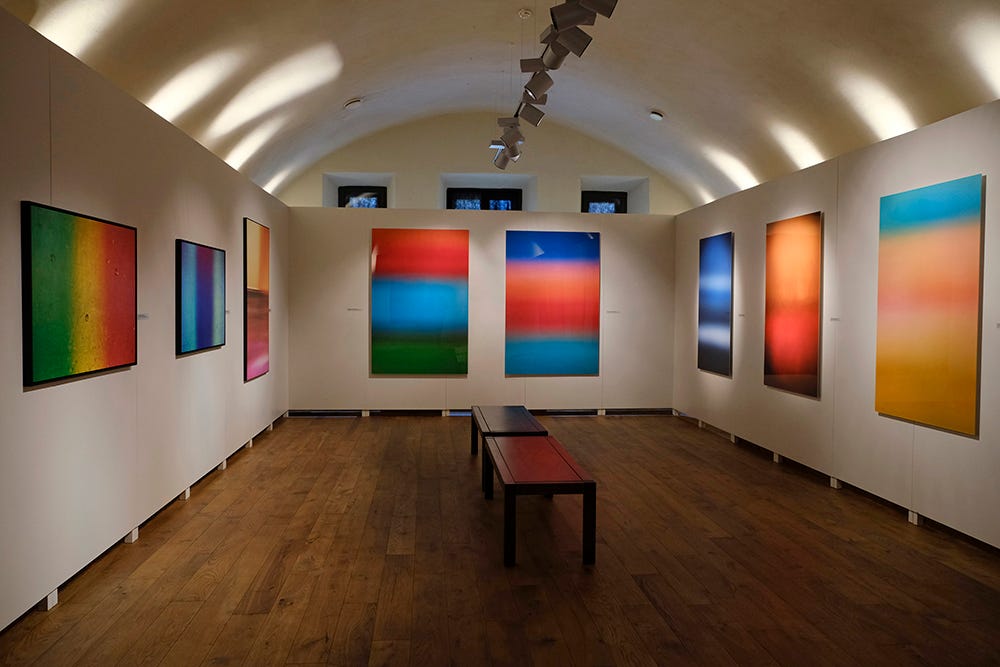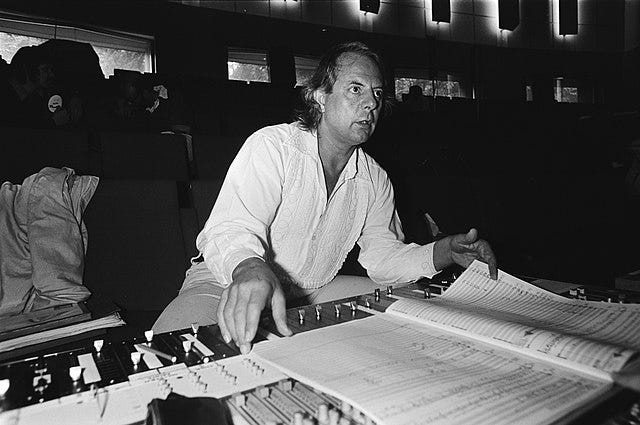Modern music – what are we afraid of?

It was a Christmas present from a dear friend: an updated edition of a 2009 book by David Stubbs called Fear of Music: Why People Get Rothko but Don’t Get Stockhausen. The title promises insights into two art forms that tap into the non-literal and defy attempts by writers to make sense of them.
Would I like it? she asked. I’m not sure, I said, but I’ll read it.
I’ve read a lot about art, but little that tells me how to think or feel about its craft. Ditto – even more so – with music. Maybe Stubbs could help.
The book starts with the premise that modern art is now mainstream, prominently exhibited, traded at important galleries for big bucks, no longer “difficult.” The equivalent in modern music is difficult – and it isn’t box office. Stubbs means the stuff by Schoenberg, Webern, Stockhausen, but also the new jazz of Ornette Coleman in 1960, the hardest edges of punk, and, in the 2023 “Afterword”, the “Concerto for Turntables and Orchestra No. 1,” by someone called DJ Switch. Why is that?
As a student, I loved the idea of John Cage’s non-piece 4’33”. Having listened to it performed live once and “got” the idea, I have never felt a need to listen to it again.
The book’s subtitle sets expectations. Rothko’s paintings: abstract, non-representational, subtle; all vague attempts to put into words the sensation of seeing them falter. Stockhausen’s orchestral music: atonal, whatever that means, but lacking melody, harmony, repetition; his electronic compositions resisting human touch. Stubbs (2023, p. 5) writes:
Mark Rothko, like many artists, had a strong association with contemporary and comparative musicians of his day. John Cage had his Robert Rauschenberg; Rothko had his Morton Feldman.
If the artists weren’t afraid of this sort of music, why are the rest of us? Are we unable or unwilling? Is this stuff music, or just noise, pretending to be something else?
On reading the title, I jumped to a hypothesis: While modern music and art share a repudiation of the past, atonal music, which “lacks a tonal center, or key,” is simply hard to listen to, whereas abstract art or even conceptual art is easy to look at. Stockhausen’s work is cerebral; Rothko’s fully human. Maybe that has something to do with anatomy. Eyes and optic nerves relay signals to a part of the brain that works differently than the parts that ears and auditory nerves reach. Stubbs’s biography – an arts journalist – didn’t hold much promise of answering that sort of question.
What Stubbs brings to the book is a dazzling understanding of the arts scene in the 20th and early 21st centuries, exhibiting a far wider range of art and music than I had expected. Loads of names of painters and musicians I’ve never heard of or seen, with rich descriptions of their performances and exhibitions. A deep appreciation of the arts in London and elsewhere. New phrases to express the non-verbal sensations of what it was like to be there, in person, at the galleries, concert halls, and dives.
He also brings an easy polemic – capitalism as culprit – with anecdotes that fall short of the threshold of evidence. But what puzzled me most is how little attention the book gives to its title. The word “fear” appears only four times in the book, and one of those is on the title page. The other three are all in the 2023 Afterword. Is Stubbs afraid to teach us something about fear?
One of the book’s most welcome surprises, however, was an introduction to the music of a guy going by the name of Merle Hazard, very near the end. I leapt to search out his tune, typing “Merle Haggard” by mistake. Gotcha!
Merle Hazard isn’t Merle Haggard. He’s a self-described “cowboy-economist” with a wicked sense of humor. Yes, he sings country music like his namesake, but the wit he brings isn’t about unrequited love. He usually sings about monetary policy, stock markets or inflation – about capitalism. I found a video of him performing to an audience at a Bloomberg conference. His stage name is a double bluff: His songs tease us about an important concept in the ethics of finance: “moral hazard.”
But one of his tunes caught the attention of David Stubbs – and to good effect: “(Gimme Some of That) Ol’ Atonal Music.” It’s a delight to listen to, to watch.
You can keep your Bach and Chopin. They’re melodic and passé. Gimme some of that ol’ atonal music, like my Daddy used to play. … He was a lover of complexity; some have said pretense. His music wasn’t joyful. It was just abstract and dense. … Emotion is for simple folk; art should be arcane. Some compositions feed the heart. My Daddy’s fed the brain. Gimme some of that ...
I could listen to that song time and time again. I will. I might dig out my ol’ guitar and play it. The lesson it taught me, however, is rather different from the one Stubbs wanted me to learn. Maybe the reason atonal music hasn’t caught on like abstract art has nothing to do with capitalism or fear.
Maybe we just don’t like the sounds. Maybe our brains are wired that way.
NB: Other reviewers share some of my reservations about the book, if not my appreciation of Merle Hazard! See:
Stubbs, D. (2023). Fear of Music: Why People Get Rothko but Don’t Get Stockhausen (2nd ed.). London: Zero Books.






